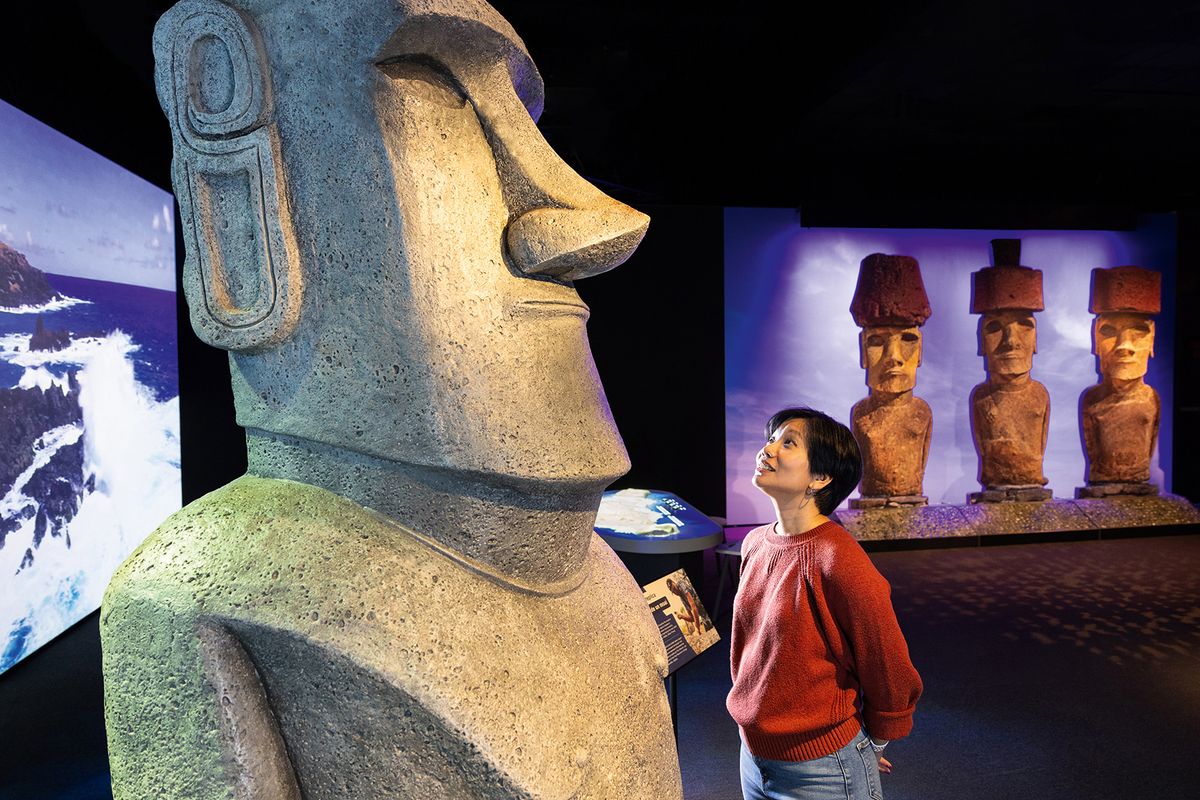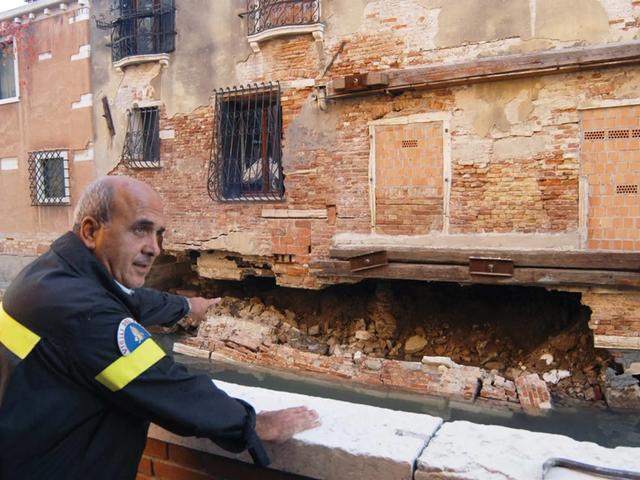In a remarkable commitment to sustainability and climate action, the Museum of Science in Boston has embarked on a year-long initiative to address climate issues and explore possible solutions. Year of the Earthshot, running throughout 2024, is led by the museum’s Center for the Environment and includes more than 1,000 programmes that engage a broad community and consider comprehensive, interdisciplinary approaches to the climate crisis, including a project with Unesco focusing on the effects of climate change on four World Heritage sites.
“Climate change is arguably the most pressing and profound challenge we face today; it’s a problem of global scale and impact, and requires the ingenuity and initiative of all of us to solve,” Tim Ritchie, the president of the museum, tells The Art Newspaper. “The Museum of Science is committed to bringing science at the accelerated pace of change to everyone, for our collective good. We’ve launched Year of the Earthshot for precisely this reason—to confront this threat together through public science learning.”
As museums and cultural institutions worldwide consider how they can engage the public on issues related to climate change, as well as understand their own roles in preventing further damage, science museums are uniquely positioned to amplify ongoing efforts. Climate change and the environment inherently fall under the purview of science and natural history, and museums across the world already translate complicated concepts to a broad audience through exhibitions, education and programming, often supported by teams of academics and scientists, as well as their extensive networks. While the Museum of Science has organised climate-related exhibitions and initiatives in the past, including Rise Up Boston: A Climate Event—its annual weekend of programming held each spring—Year of the Earthshot marks its most significant effort to date.
“Year of the Earthshot will bring exhibitions and programming that highlight innovative climate solutions that give us reasons for hope in a rapidly changing world,” says David Sittenfeld, the director of the Center for the Environment.
Intersection of science and society
Part of the Museum of Science’s Centers for Public Science Learning, the Center for the Environment was formed in 2023 as a model for science museums to address climate change and “give a voice to people in helping to shape the future and the issues that lie at the intersection of science and society”, Sittenfeld says. The centre produces programming for museum visitors, as well as for educators, students and online audiences.
Included in the extensive roster of in-person and virtual initiatives for Earthshot are films, exhibitions and classroom activities. One of the museum’s current Earthshot exhibitions, Changing Landscapes: An Immersive Journey (until 5 May), highlights how climate change has impacted four Unesco World Heritage Sites, as well as the ongoing issues these sites face and some of the groups working to protect them. Organised in partnership with Unesco, the immersive exhibition focuses on the pyramids of Giza in Egypt, Mesa Verde National Park in Colorado, Rapa Nui National Park on the Chilean island (also known as Easter Island) and the lagoons of Venice, demonstrating the global nature of the climate crisis. The show features model artefacts, such as moai created from scans of the famous Rapa Nui figures, hands-on activities and photogrammetry of each site showing some of the issues they face.
In Venice, for example, rising sea levels are a major threat. While high tides have historically submerged parts of the city for roughly four days each year, the exhibition graphics show that Venice is now flooded to some extent at least 100 days per year. The water today can reach a height of 3ft; but within 80 years, scientists predict it will reach above 10ft, completely submerging some buildings. Visitors can view a simulation of this flooding, including a dramatic view of a nearly underwater St Mark’s Basilica.
Rapa Nui faces similar threats. The placement of the moai figures is sacred, but they are in an area along the coastline that is vulnerable to rising sea levels. The site has seen devastating wildfires and an increase in invasive species that threaten its structural integrity. Mesa Verde National Park, home to precolonial Ancestral Pueblo settlements, also contends with invasive species, as well as erosion and wildfires. It, too, is threatened by development projects, including a nearby highway. Potential development threatens the pyramids of Giza as well—as do extreme heat and heavy rainfall. (For these and all World Heritage sites, Unesco implements various measures to protect against damage, such as managing the landscapes of Rapa Nui and Mesa Verde and providing immediate, on-site support for emergencies.)
Other Earthshot-related exhibitions are coming this summer, including Survival of the Slowest, which will explore how slow-moving species like sloths and tortoises survive in ecosystems that traditionally have stronger, faster species at the top of the food chain. The museum will also stage Earthshot, the initiative’s eponymous exhibition that focuses on the history and future of energy.
Revealing hopeful innovation
“Climate change’s impact on our lives is everywhere, but it’s harder to see the hopeful innovation happening right now in research settings and being implemented in our communities,” Sittenfeld says. To this end, the Museum of Science is fostering community engagement through partnerships with several organisations, including local groups committed to developing sustainable technologies. Together, they are hosting after-hours events, public forums and online content for social-media and classroom use. “Our goal is to give people windows into how that innovation will transform the ways that we live, work, eat and move, in terms of what other people are doing at a systemic level that we’re all going to be experiencing and using, and also things that we can adapt and integrate into our own existences and lives.”
The Earthshot initiatives are inherently interdisciplinary, reflecting the complex nature of the issues at hand. The museum even launched a vertical “smart farm” in January with Freight Farms, a Boston-based company that develops indoor, hydroponic farms in containers similar to those used for shipping. Collaborating with the Boston-based chef Douglass Williams, the museum has also launched an online cooking show, Tomorrow’s Menu. Exploring the relationship between food and the environment, it features lessons on sustainable food and farming, such as hydroponic gardens and plant-based meat alternatives, as well as urgent concerns of food insecurity. The goal of these and other Earthshot initiatives is to inspire visitors to consider the steps they can take in their everyday lives to implement sustainable practices.
“By focusing on climate solutions, we aim to give our audiences agency and hope, so that they feel they are part of those solutions and are empowered to act,” Ritchie says.
The museum is also distributing a public survey in order to better understand people’s feelings on climate issues and how they hope to find remedies for them. To engage younger audiences, it is developing curricula with its Youth Engineering Solutions programme to teach children and young adults about environmental topics related to their daily lives, as well as broader issues like oil-spill cleanup. Other lessons relate to vertical farms, like the museum’s own, and solar ovens.
“We want people to feel hopeful and envision what a better, equitable, zero-carbon world looks like,” Sittenfeld says. “Year of the Earthshot offers the opportunity to give people a voice in helping to adopt and shape the transformations that are happening, so that they will address everyone’s priorities and needs, and show that brilliant people and organisations are working on creative solutions that are going to meet the crisis we face in ways that will serve us all.”



